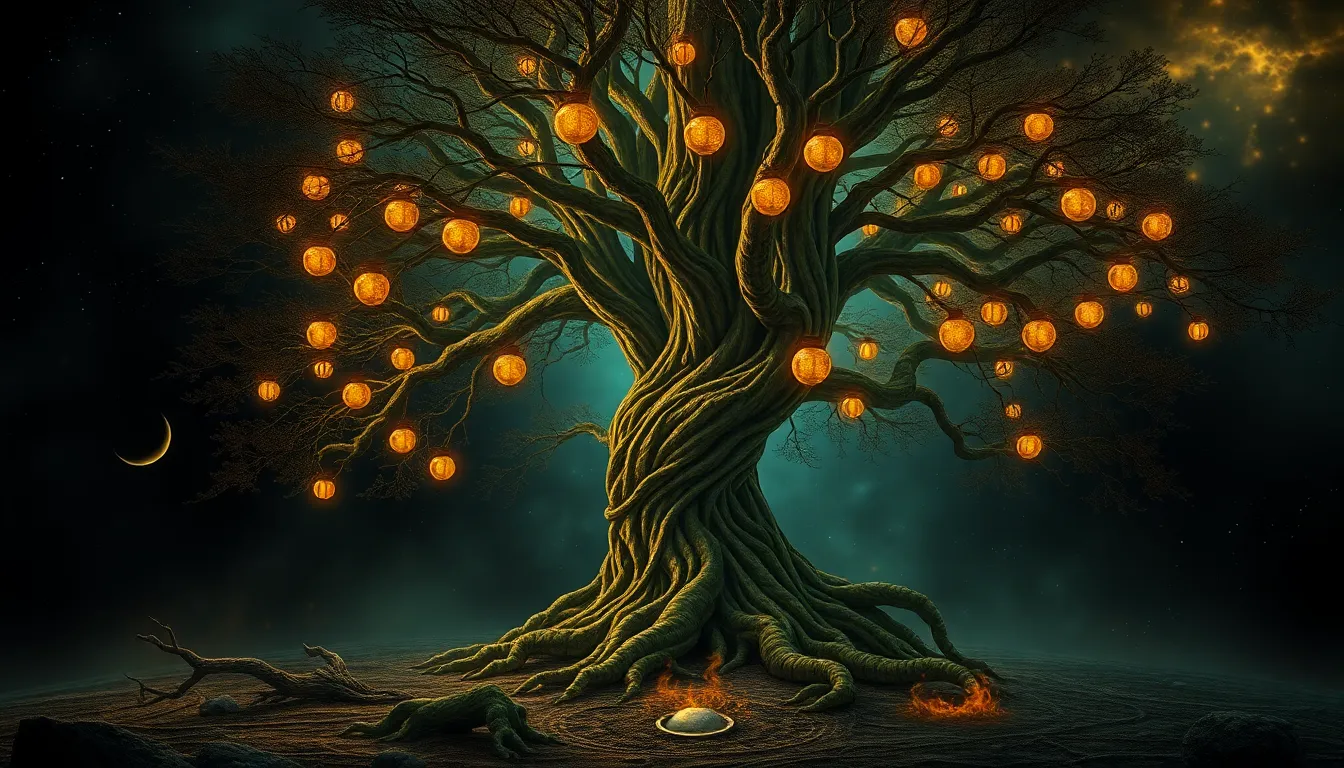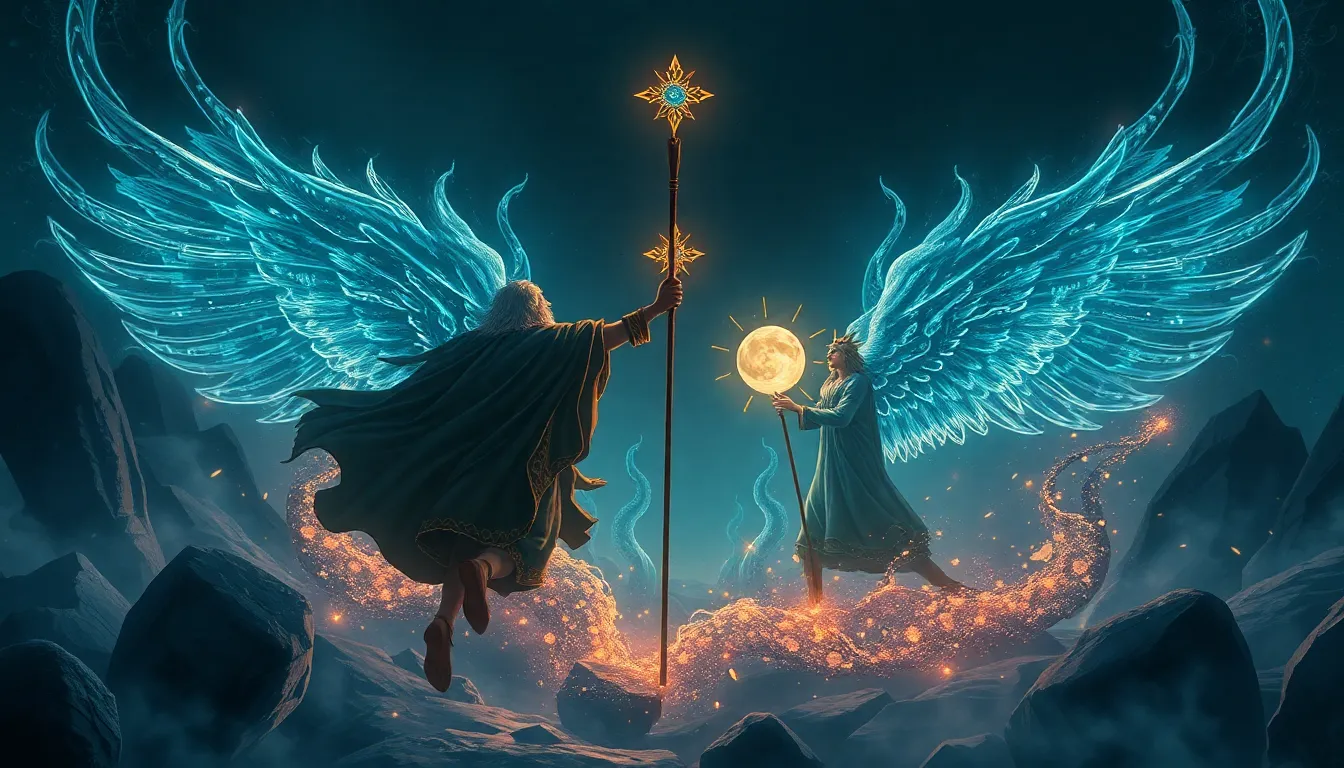The Tree of the Underworld: Myths of Connection to the Afterlife
I. Introduction
The Tree of the Underworld is a profound symbol found in various mythologies, representing the connection between the living and the afterlife. These trees are often depicted as sacred, serving as a bridge between this world and the next, embodying themes of life, death, and rebirth. Across cultures, myths frequently intertwine trees with the afterlife, revealing deep-seated beliefs about mortality and the spiritual journey. This article aims to explore these connections, shedding light on the significant role that trees play in our understanding of life and death.
II. The Symbolism of Trees in Various Cultures
Trees have been universally recognized as powerful symbols in numerous cultures. Their life cycle—growth, decay, and renewal—mirrors the human experience and the cycle of existence.
- Universal themes of growth and decay: Trees grow from small seeds into towering giants, only to eventually decay and return to the earth, symbolizing the cyclical nature of life.
- Trees as symbols of life and death: In many traditions, trees are seen as embodiments of life, providing sustenance and shelter, while also being associated with death and the afterlife.
- Cultural variations in tree symbolism: Different cultures have unique interpretations of trees, often attributing specific meanings based on local beliefs and practices.
III. The Tree of Life vs. The Tree of the Underworld
While the Tree of Life represents growth, vitality, and connection to the divine, the Tree of the Underworld embodies themes of death, transition, and the afterlife. Understanding the distinctions between these two concepts is vital in exploring their roles in mythology.
- Comparative analysis of the two concepts: The Tree of Life is often depicted as a source of nourishment and spiritual enlightenment, while the Tree of the Underworld serves as a passageway for souls.
- How cultures differentiate between the two trees: In some traditions, these trees coexist, while in others, they represent opposing forces.
- The role of duality in mythology: The interplay between life and death, creation and destruction is a recurring theme, emphasizing the balance necessary for existence.
IV. Key Myths Featuring the Tree of the Underworld
Several ancient myths prominently feature the Tree of the Underworld, illustrating its significance in various cultures.
- The Norse Yggdrasil: This immense ash tree connects the nine worlds, including the realm of the dead, Hel. It symbolizes the interconnectedness of all existence and the journey of souls.
- The Sumerian Huluppu Tree: In the Epic of Gilgamesh, this tree is associated with the goddess Inanna and serves as a symbol of fertility and the afterlife.
- The Maya’s World Tree: Known as the Ceiba tree, it connects the heavens, earth, and underworld, embodying the cyclical nature of life and death.
V. Trees as Portals: Crossing into the Afterlife
Folklore from various cultures often depicts trees as gateways to the afterlife, highlighting their importance in rituals and spiritual practices.
- Folklore surrounding trees as gateways: Many cultures believe that specific trees serve as portals or thresholds for souls transitioning to the afterlife.
- Rituals involving trees for connecting with the deceased: Rituals such as tree planting or offerings at sacred trees are common ways to honor and communicate with ancestors.
- The significance of specific species of trees: Certain trees, like the oak or yew, are often revered in spiritual practices due to their longevity and strength.
VI. The Role of the Underworld in Mythical Narratives
The concept of the underworld is integral to many mythologies, shaping narratives around death and the afterlife.
- Overview of the underworld in various mythologies: From the Greek Hades to the Egyptian Duat, these realms serve as places for the departed.
- How the Tree of the Underworld embodies the journey of souls: Trees often symbolize the path souls must take, providing a sense of direction and purpose.
- The function of these myths in cultural storytelling: They serve to explain the mysteries of life and death, offering comfort and understanding.
VII. Psychological Interpretations of the Tree of the Underworld
The Tree of the Underworld also holds psychological significance, particularly in Jungian analysis, where it represents deeper human fears and aspirations regarding mortality.
- Archetypal analysis of the Tree in Jungian psychology: The Tree serves as an archetype representing the collective unconscious and the human experience.
- The Tree as a representation of human fears and hopes regarding death: It encapsulates the dual feelings of fear and acceptance associated with mortality.
- The role of nature in coping with mortality: The presence of trees in our lives can provide solace and a sense of connection to something greater.
VIII. Modern Interpretations of Ancient Myths
Ancient myths continue to influence contemporary culture, art, and spirituality, demonstrating their lasting relevance.
- Influence of ancient myths on contemporary literature and art: Modern storytelling often draws inspiration from these timeless narratives, reinterpreting them for new audiences.
- The Tree of the Underworld in popular culture: Movies, books, and art frequently incorporate elements of these ancient beliefs, showcasing their significance.
- Relevance of these myths in today’s spiritual practices: Many people still engage with these narratives, using them to navigate their understanding of life and death.
IX. Conservation and Reverence for Sacred Trees
As we reflect on the significance of trees in mythology, it is essential to consider the importance of preserving these natural wonders.
- The importance of preserving trees linked to mythological beliefs: Sacred trees hold cultural value and heritage, reminding us of our connection to nature.
- Environmental ethics and the symbolism of trees: Protecting trees is not only a matter of conservation but also a way to honor the beliefs they represent.
- Case studies of communities safeguarding sacred trees: Many communities around the world are actively working to protect trees that hold spiritual significance.
X. Conclusion
The Tree of the Underworld serves as a powerful symbol in mythology, connecting the realms of the living and the dead. Through various cultural interpretations, it embodies the dualities of life and death, growth and decay. By exploring the significance of these trees, we gain insights into human beliefs about mortality and the afterlife, reminding us of the enduring connection between nature and our spiritual journeys.



